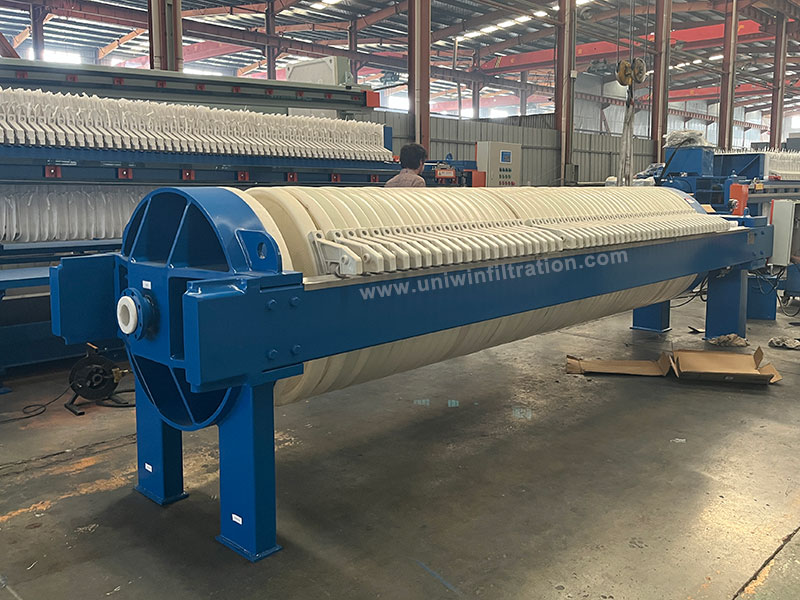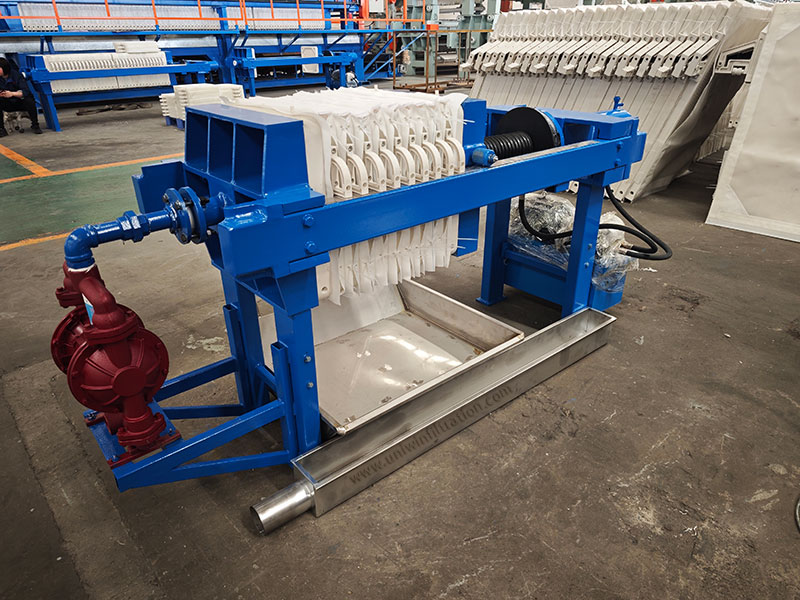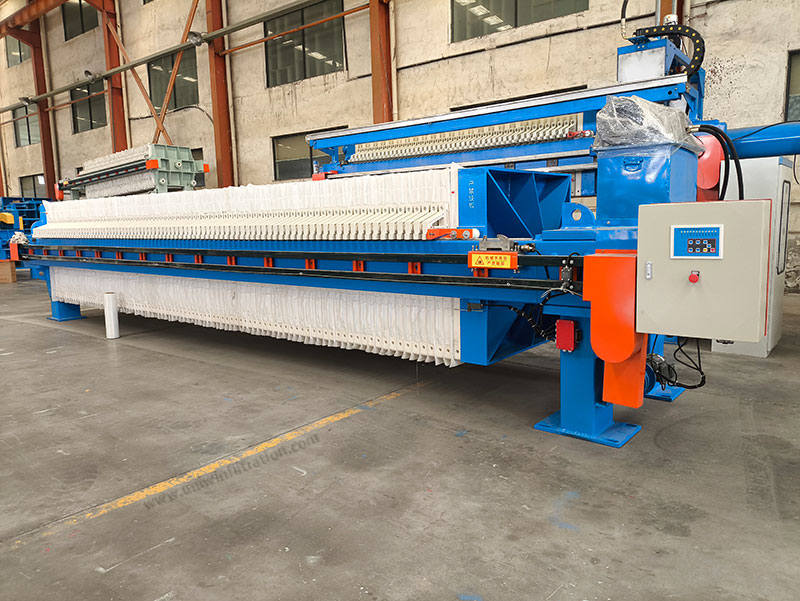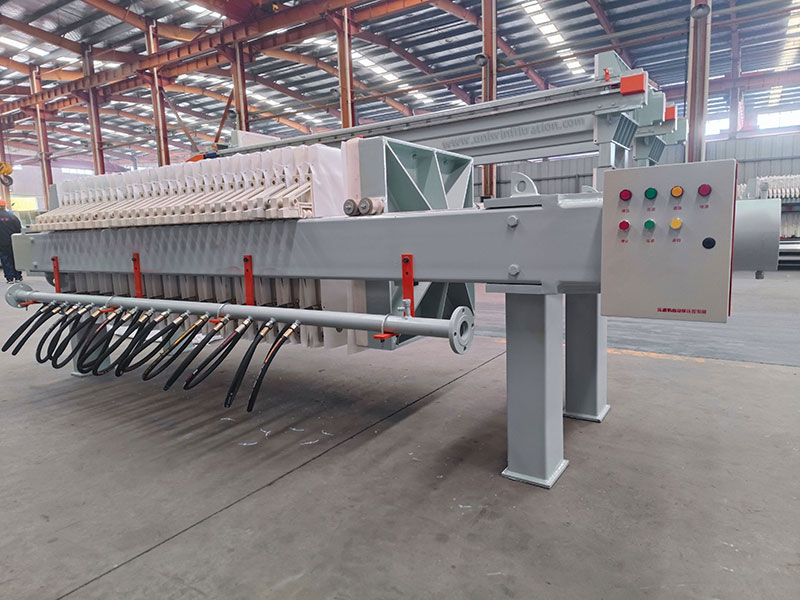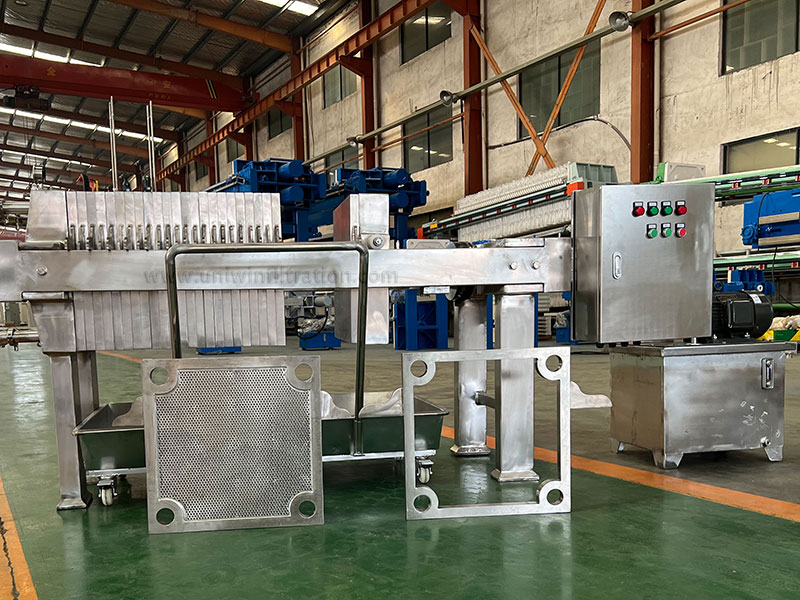High-Pressure Round Plate Filter Press
A high-pressure round plate filter press utilizes high pressure to forcibly squeeze and filter liquid from a slurry. Its core components are a series of round filter plates, with a hydraulic system providing powerful compression. Compared to the more common square plate and frame filter press, the circular structure offers significant advantages in terms of uniform force distribution, sealing, and pressure resistance.
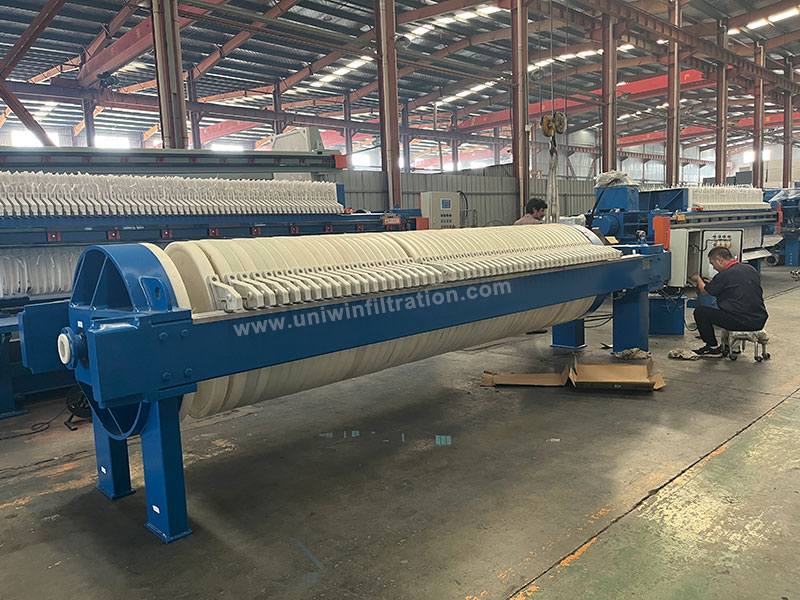
Structural Features of a High-Pressure Round Filter Press
Filter plate structure
Round filter plates are used, typically made of polypropylene (PP), stainless steel, or a composite material.
The circular structure avoids pressure concentration, ensuring more uniform force distribution and the ability to withstand higher pressing pressures.
The filter plate has a feed port in the center, allowing slurry to enter from the center and be evenly distributed to each filter chamber.
Hydraulic compressing device
A hydraulic cylinder generates powerful thrust, compressing the filter plates to form a sealed filter chamber.
This provides high clamping force and a strong seal, making it suitable for high-pressure filtration.
Filter cloth
Covering both sides of the filter plate, it is responsible for retaining solids and allowing liquid to pass through.
An optional automatic cleaning device prevents clogging and maintains filtration efficiency.
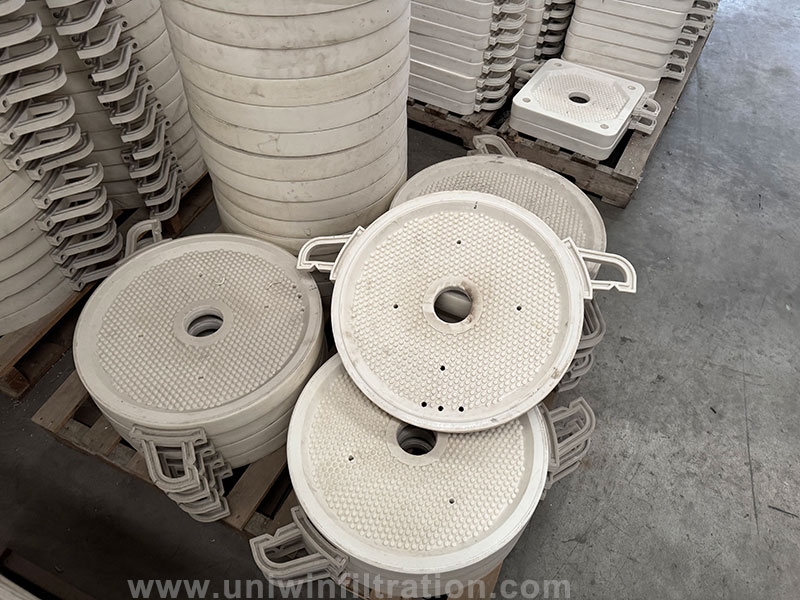
Frame
Comprising a main beam, fixed end, and clamping end, it supports and carries the entire filter press system.
Its high strength allows for long-term, high-pressure operation.
Control System
Equipped with an electronic control cabinet, it enables automatic clamping, pressure maintenance, and unloading.
It can also be connected to a PLC and a remote monitoring system for intelligent operation.
Working Principle of a High-Pressure Circular Filter Press
- Feeding stage
The slurry enters the center of the filter plate from the feed pump through a pipeline. Under pressure, the slurry is evenly distributed to each filter chamber. - Filtration stage
The filtrate flows through the filter cloth and exits via the drainage channel, while solid particles are retained on the cloth’s surface, gradually building up into a filter cake. As the filter cake thickness increases, the filtration resistance increases, and the system maintains high-pressure operation. - High-pressure pressing stage
After the initial filtration is complete, the hydraulic system applies further pressure. Some models are equipped with rubber membranes or diaphragms, which allow compressed air or water to squeeze the filter cake a second time, further reducing the moisture content. - Discharging stage
After the feed is stopped, the hydraulic system releases the filter plates. The plates automatically separate one by one, and the filter cake falls under its own weight or under the action of a discharge device.
High-pressure Round Plate Filter Press
| Model | FilterArea(m2) | Plate size | cake thickness | Plates quantity | Chamber volume(L) | Filtering pressure(Mpa) | Deimensions(mm) | Weight(kg) |
|---|---|---|---|---|---|---|---|---|
| RFP20/800-25 | 20 | Φ800 | 25 | 20 | 255 | 1.0-2.0 | 3300*1100*1060 | 3346 |
| RFP30/800-26 | 30 | Φ800 | 25 | 30 | 377 | 3780*1100*1060 | 3590 | |
| RFP40/800-27 | 40 | Φ800 | 25 | 40 | 499 | 4300*1100*1060 | 4554 | |
| RFP50/800-28 | 50 | Φ800 | 25 | 50 | 621 | 4820*1100*1060 | 5150 | |
| RFP60/800-29 | 60 | Φ800 | 25 | 60 | 753 | 5340*1100*1060 | 9710 | |
| RFP70/800-30 | 70 | Φ800 | 25 | 70 | 875 | 5860*1100*1060 | 5760 | |
| RFP80/800-31 | 80 | Φ800 | 30 | 80 | 1200 | 6400*1100*1060 | 6860 |
Specific Advantages of High-Pressure Round Filter Press
High-dryness processing reduces subsequent costs
Reducing filter cake moisture content directly reduces drying, transportation, and handling costs. This advantage is particularly evident in industries such as mineral processing, coal chemical processing, and ceramics.
Reduced failure rate and maintenance cycle
The circular structure reduces the frequency of filter plate damage, easing maintenance efforts and lowering operating costs.
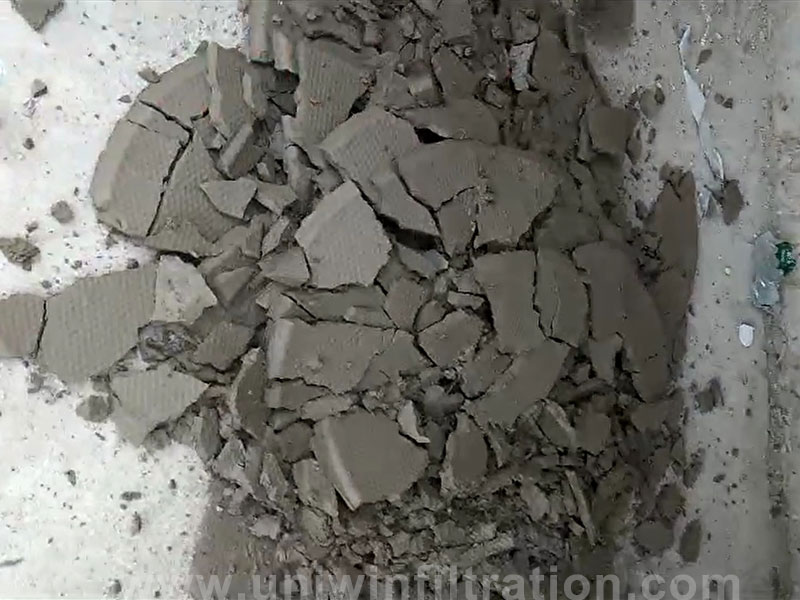
More suitable for complex working conditions
When dealing with highly corrosive, highly viscous, or easily crystallizing materials, conventional filter presses are prone to clogging or insufficient pressure. Round high-pressure filter presses, on the other hand, offer smoother filtration and more stable results.
Higher automation
They are often equipped with intelligent control systems that support remote monitoring, alarm linkage, automatic clamping, and automatic unloading, improving operational efficiency

